ART DEMO REPORT
Pastel Portraits with Liz Turner
First portrait
Liz Turner, who is a member of Peninsula Arts Society, paints wonderfully expressive portraits with lovely glowing colours. Liz worked on two different portraits, one of a red-haired young girl, and another a young man with a mop of curly dark hair.
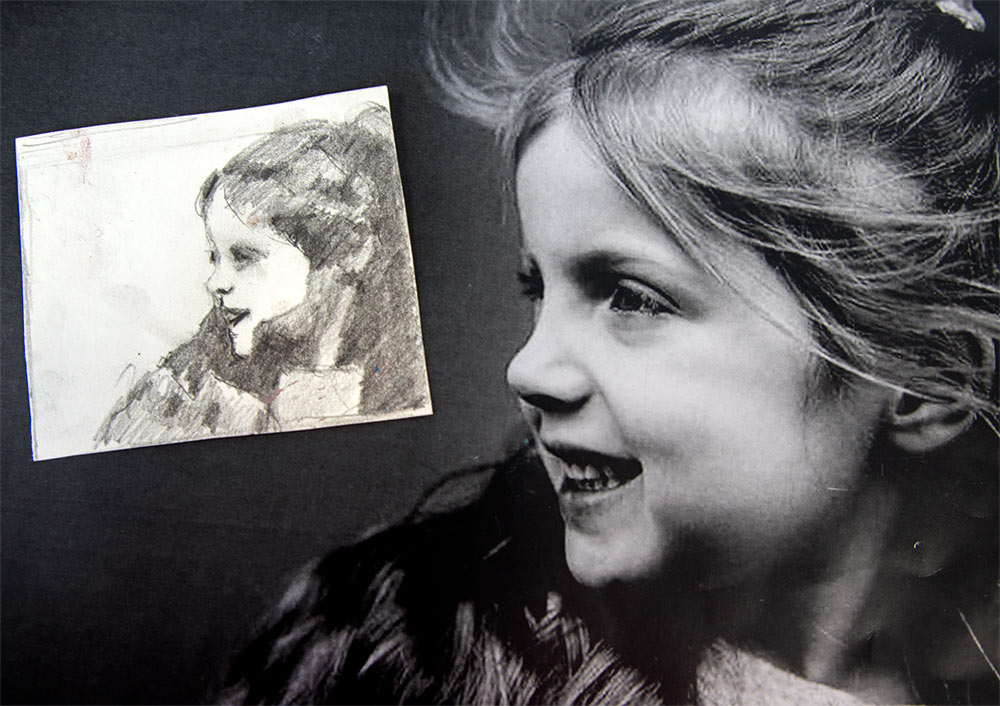
Photo reference and tonal study
Working from photo references, she began the girl’s portrait with a rough monochrome tonal study to map out the key darks. Using this as a guide, she began blocking in the dark tones, highlights and a blue background. Liz explained that tones create the base of the painting. If they are strongly rendered and correctly placed, you can’t go wrong when it comes to adding the colour.
For applying large areas of colour and tone, Liz used pan pastels applied with a rag or applicator with a removable foam tip.
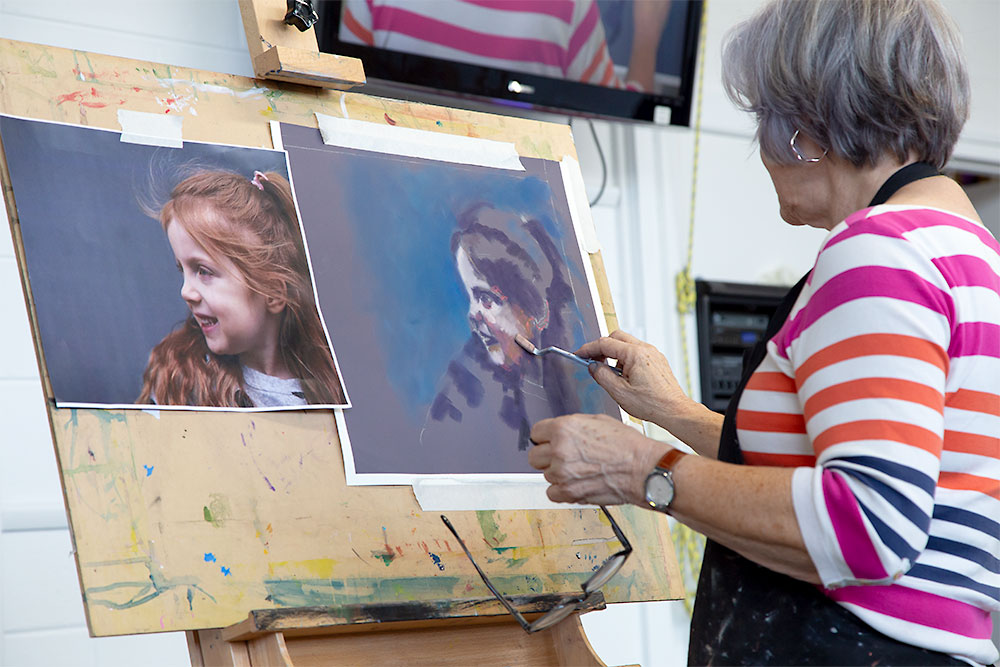
Liz Turner – blocking in lights and darks
With pastel sticks she began adding accents of colour, paying careful attention to the balance of cool and warm colour in the composition. She blended and softened some areas and edges, but left the lines of pigment in others, creating an expressive variety of texture and colour throughout the work. Liz prefers an ‘’unfinished’’ look to her work so avoids over blending. She uses a variety of soft brushes for blending.

Pastel sticks and foam-tipped applicator
Small details, such as detail in the eyes were added using pastel pencils and any blending was done with a tiny foam applicator. Liz shared with us her observation that ‘’eyes are never white’’.
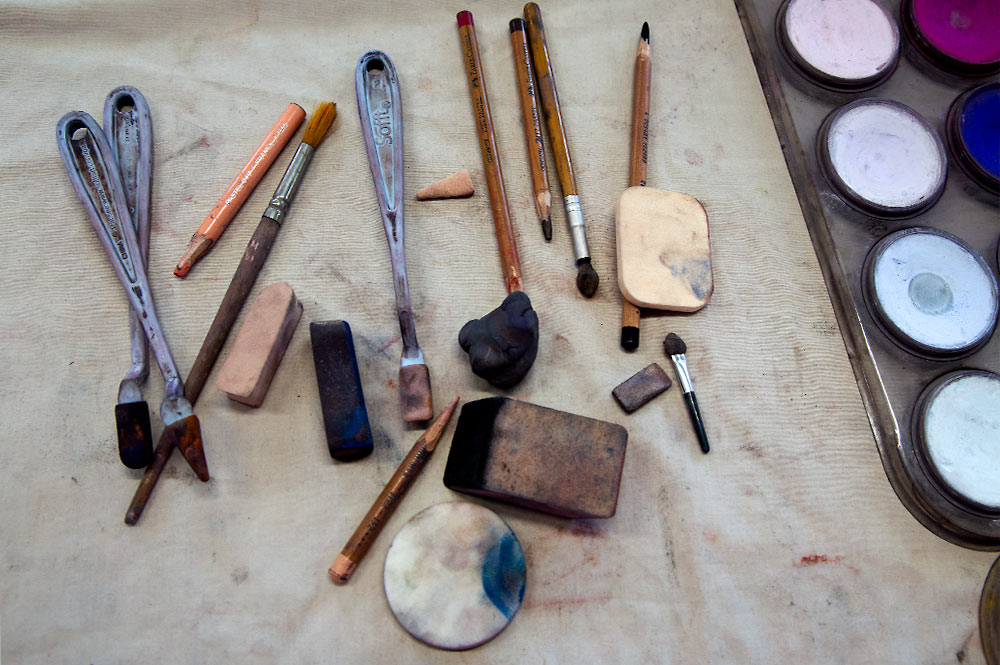
Blending tools, pastel pencils and pan pastels
It was interesting to watch Liz constantly referring back to her reference. She maintains that you have to be able to see things properly before you can paint them properly. For example, if you observe closely, you will see that facial shadows often have a subtle green tinge. She took great care in placing shadows on the face, as these are what define the facial features like the nose and jawline. Liz said the more experienced you become in portraiture, the more you learn about the structure of the face, so even when you work from a 2D photo, you can model, for example, a convincing jawline.
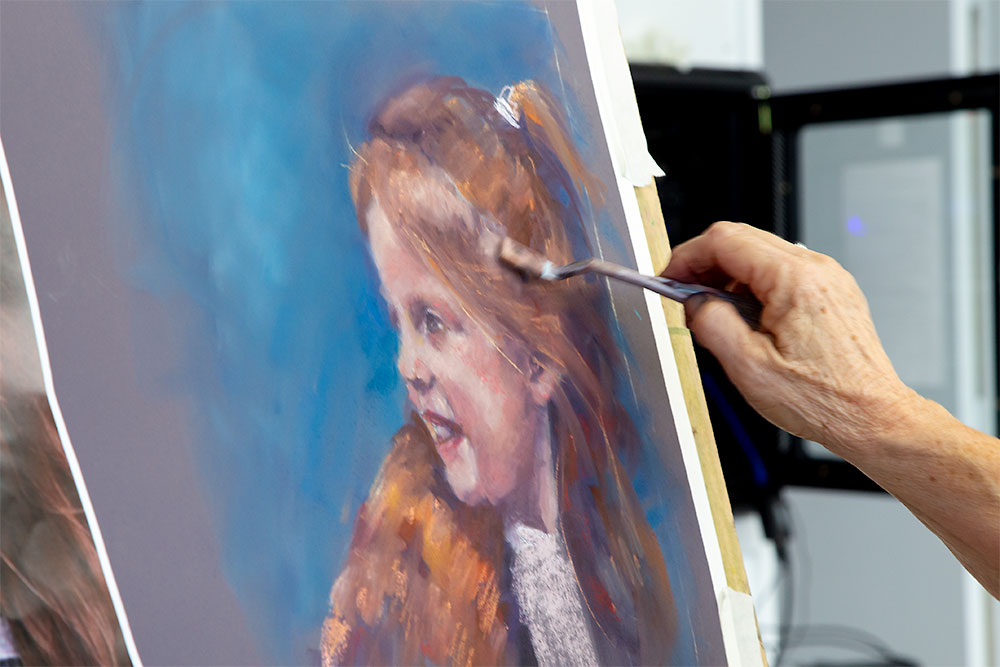
Adding colour hghlights.
Liz says the hardest thing is knowing when to stop so you do not overwork the painting, but stop she did, and moved on to her second portrait.
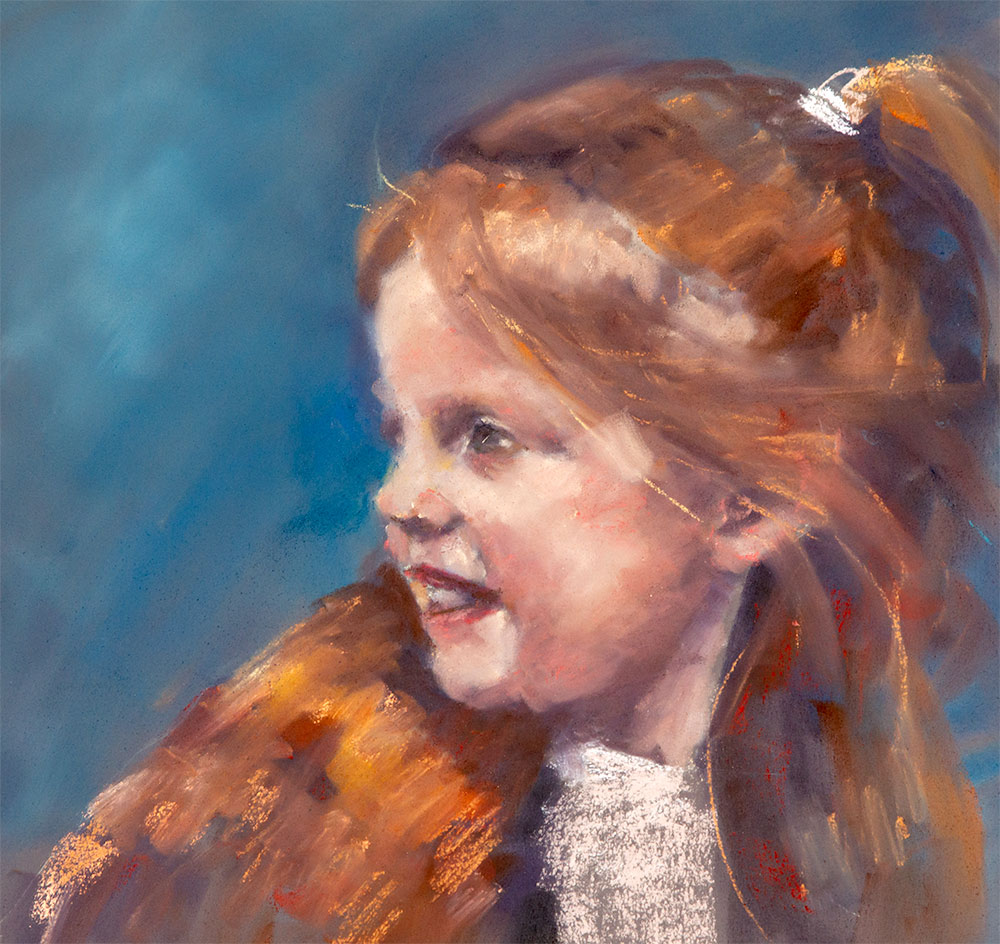
Liz Turner – pastel portrait
Second portrait
The second portrait had a very different starting point. Liz brought along a coloured under painting in acrylic inks, painted over expressive black linework drawn with a sharpie. For this technique Liz recommends using either watercolour paper or primed canvas, so the surface does not buckle when applying wet media.
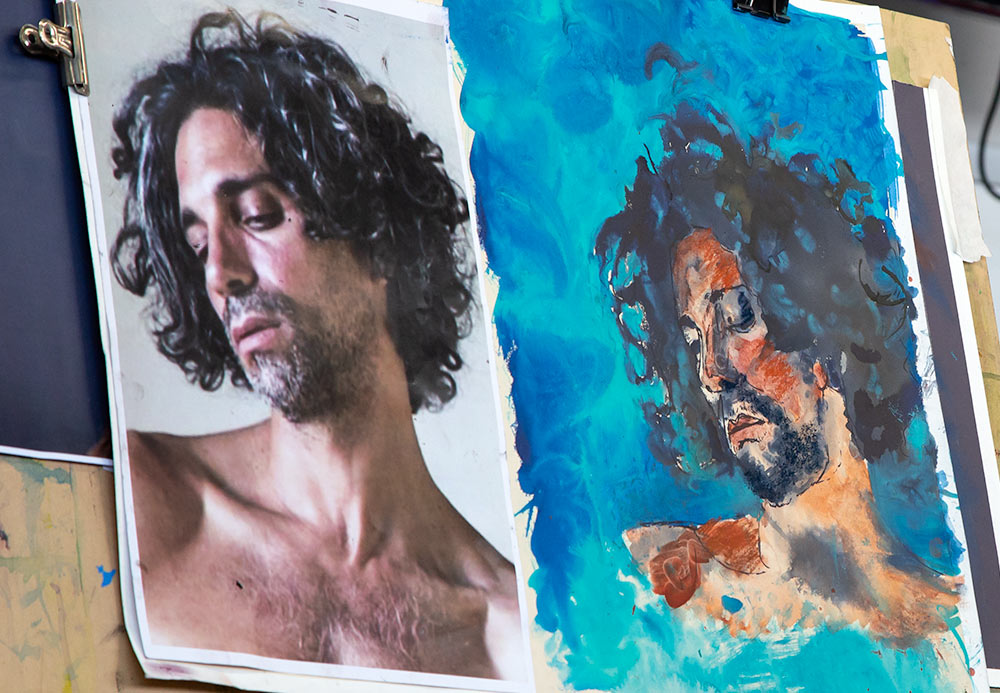
Photo reference and under painting with an initial layer of pastel.
She added layers of coloured pastel using the same techniques she used with the first portrait, and the result was striking.
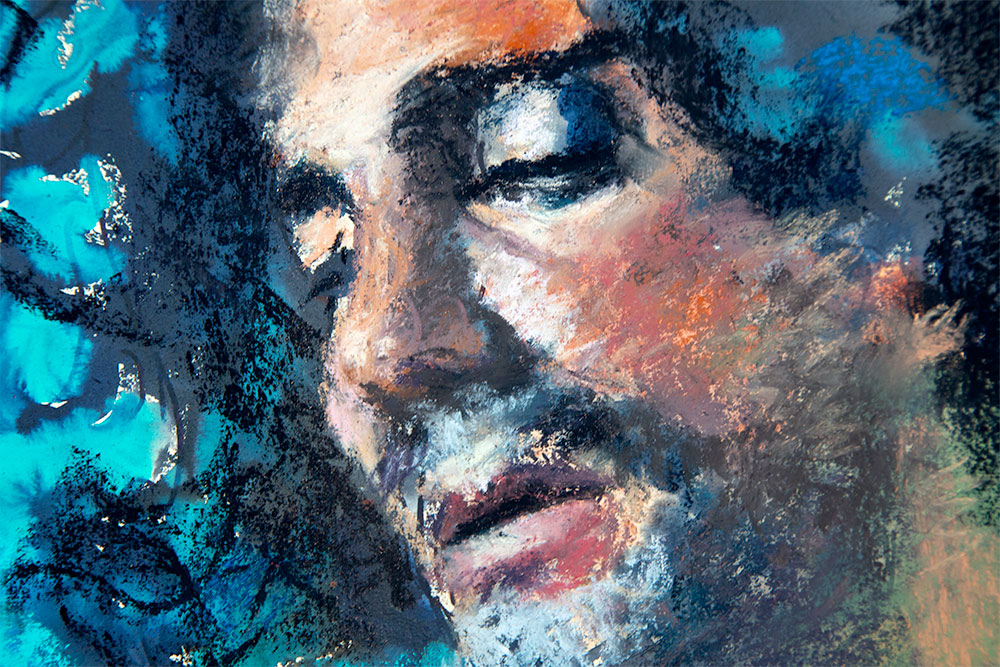
Detail
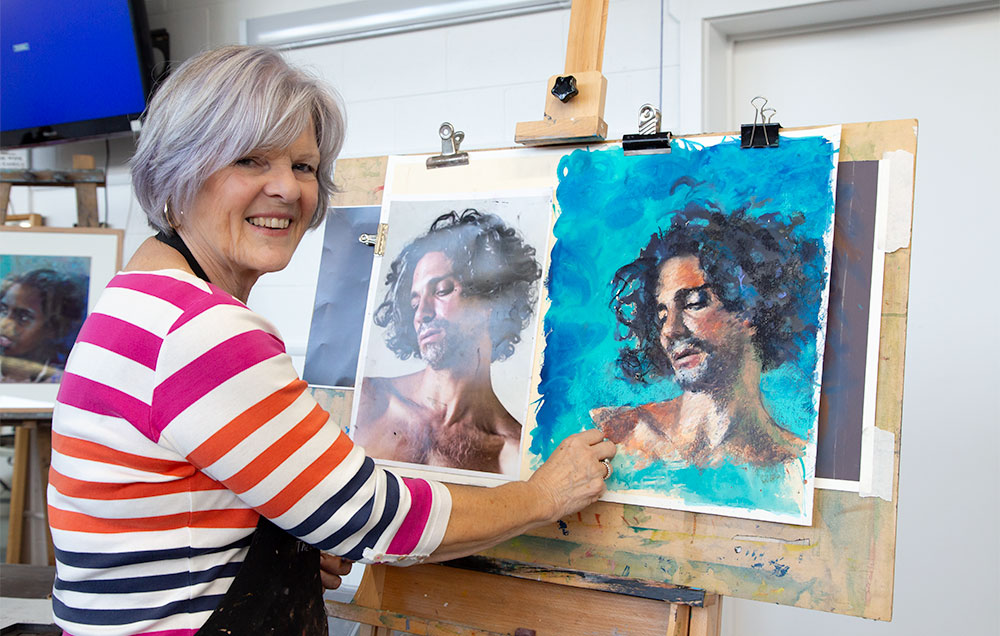
Liz Turner
In a couple of hours, Liz created two very different yet equally compelling portraits; a lovely red- haired young girl with an infectious smile that made you want to smile back at her, and a very vibrant young man whose face just jumped out of the painting and whose energy shone through the work.
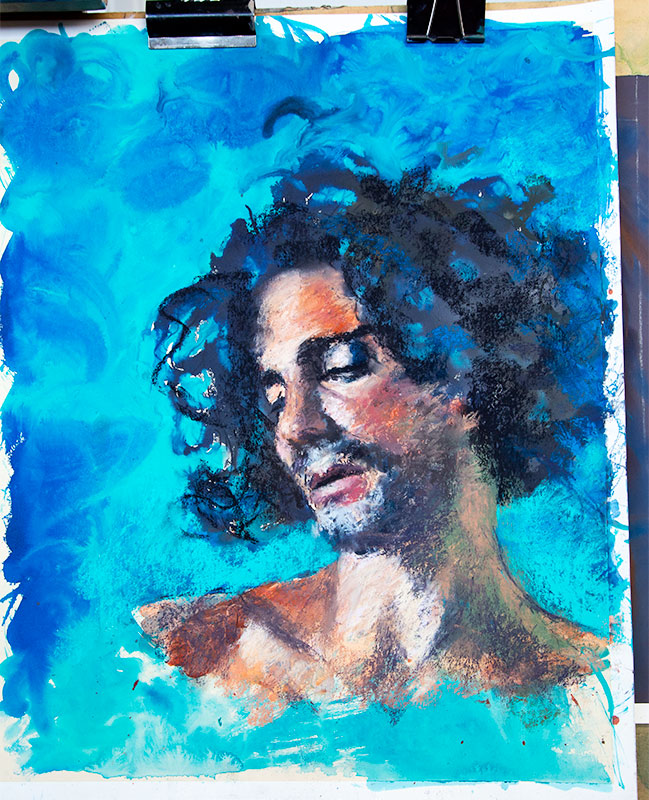
Portrait by Liz Turner

 JoanDenner
JoanDenner